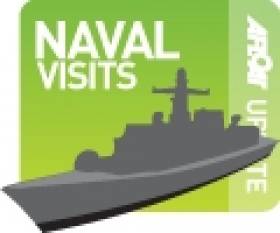Displaying items by tag: Dutch torpedo training ship
Dutch Naval Flotilla Head for Dublin Port Visit
#DUTCH NAVAL VISIT – A torpedo training ship HNLMS Mercuur (A 900) is one of four vessels of the Royal Netherlands Navy based in Den Helder which are scheduled to visit Dublin Port next weekend, writes Jehan Ashmore.
During the four-day call, the HNLMS Mercuur and the Alkmaar class minehunter HNLMS Vlaardingen (M 863) will be open to the public on the Saturday and Sunday between 2pm-4pm. All the vessels will be berthed alongside Sir John Rogersons Quay.
HNLMS Mercuur is fitted with a maintenance shed for torpedoes and as a target ship for submarines to fire dummy torpedoes. She has an armament of 1 underwater launch tube for Mk. 48 torpedoes. The 64.8m vessel has a crew of 39 and the vessel which displaces 1,400 tonnes is powered by a 2 x MAN 6L-20/27 diesels (1,632 hp total) which deliver 14 knots.
The 41.5m long navy training ship (MOV) Van Kinsbergen (A902) is used for practical nautical training, a task for which it was specifically built and equipped. In addition to the navigation bridge, the MOV Van Kinsbergen has a second, fully equipped training bridge. There are five-crew and also the same number of civilian crew.
A second Alkmaar class vessel HNLMS Zierikzee (M862) forms the final member of the flotilla. Each of the 51.5m long vessels which weigh 534 tonnes has a crew ranging between 28-38 personnel. The Alkmaar class origin is a joint design of the Netherlands, Belgium and France navies.
The Dutch constructed the propulsion system, the Belgiums provided the electronics and the French built the mine-hunting equipment. To reflect the cooperation between the three countries, the international name of this class of ship, are referred as the Tripartite class.





























































